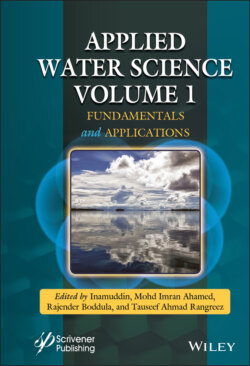Читать книгу Applied Water Science - Группа авторов - Страница 23
2.1 Introduction
ОглавлениеPharmaceuticals refer to a group of chemicals widely used to control of human and animal infections (Daughton and Ternes, 1999), although the term has been recently extended to include illicit or recreational drugs (Fantuzzi et al., 2018). Pharmaceuticals are not a homogenous group of compounds and have unique characteristics including (1) capacity to exist in different crystalline forms (i.e., polymorphism), (2) often large and complex molecular structures, (3) existence of multiple ionizable sites in their molecules, and (4) are predominantly introduced into the environment via anthropogenic sources (Cunningham, 2004; Fatta-Kassinos et al., 2011).
Pharmaceuticals are widely used in both human and animal health; hence, they ubiquitous in the environment (Daughton and Ternes, 1999). Pharmaceuticals are consistent as non-persistent in the environment, but their widespread and continuous use, coupled with low removal in water and wastewater treatment plants, implies that they are continuously released into aquatic systems (Ebele et al., 2017). Therefore, due to their omnipresence, pharmaceuticals are considered as “pseudo-persistent” in the environment, more than even some pesticides (Ebele et al., 2017).
Recently, there has been increasing public and research interest in pharmaceuticals and their metabolites as emerging contaminants (Sorensen et al., 2015; Omar et al., 2016; Gwenzi and Chaukura, 2018). Interest in pharmaceuticals and their metabolites is motivated by their potential human and ecological health risks, and the availability of advanced analytical equipment for their detection and characterization (Gwenzi and Chaukura, 2018). Pharmaceuticals and their metabolites have been detected in aquatic systems in various regions (Verlicchi et al., 2016; Gwenzi and Chaukura, 2018; K’oreje et al., 2019). A number of reviews show that pharmaceuticals have been detected in aquatic systems in almost all continents, including Europe, Asia, Africa, North America, and Australia (Verlicchi et al., 2016; Gwenzi and Chaukura, 2018; K’oreje et al., 2009). For example, in Africa, pharmaceuticals have been investigated and detected in about six countries of the total 54 countries in Africa (K’oreje et al., 2019). The lack of data in the remainder 48 countries does not necessary reflect absence in aquatic systems. Rather, this is indicative of the severe lack of research on the subject caused by lack of funding, expertise, and analytical equipment (Gwenzi and Chaukura, 2018).
The current chapter summarizes the nature, occurrence, behaviour, human health risks, and removal of pharmaceuticals in aquatic systems. The objectives are: (1) to summarize the nature, sources and behaviour of pharmaceuticals detected in aquatic system; (2) to highlight human exposure pathways, potential health risks, and removal methods for pharmaceuticals; and (3) to identify knowledge gaps to guide future research. Figure 2.1 summarizes the focus of the chapter, including the nature, sources, behaviour, human exposure and health risks, and removal of pharmaceuticals in aquatic systems.
